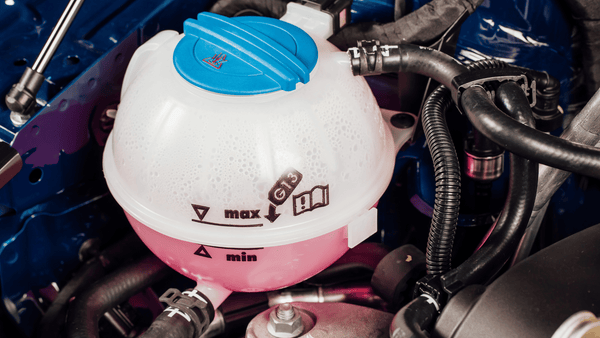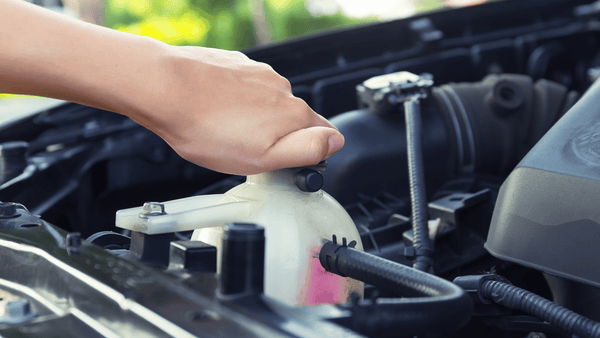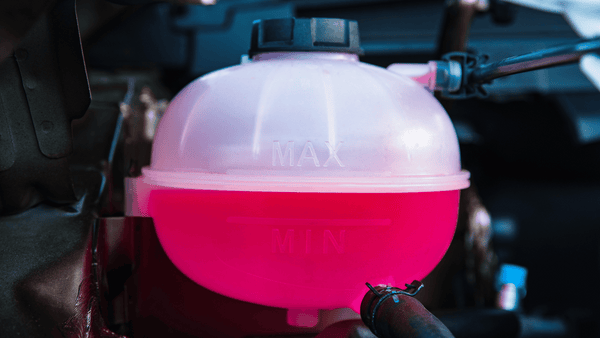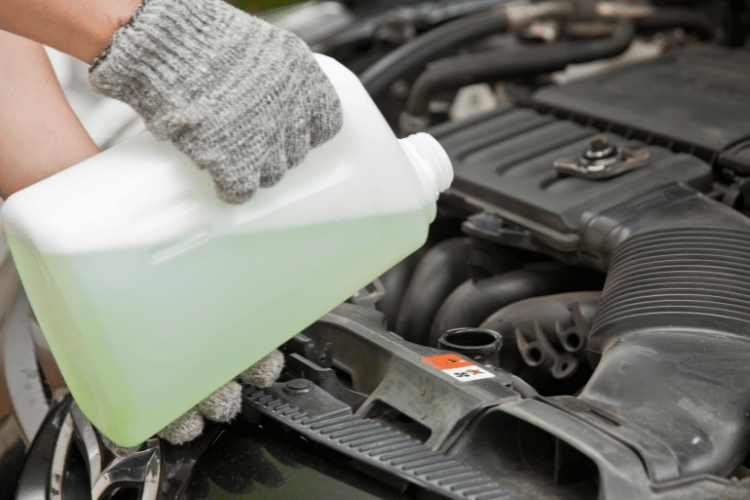A coolant overflow tank plays an important role in the cooling system of any vehicle. It keeps the system from overheating and helps maintain proper operating temperatures. Most modern cars utilize a pressurized cooling system with a coolant overflow tank. This tank acts as a reservoir to collect excess coolant circulating through the engine. When coolant heats up inside the engine, it expands, and this overflow tank accommodates the additional volume, helping maintain proper pressure. Without a coolant overflow tank, excess coolant would have nowhere else to go, and places inside the engine could overheat, boil over, or leak. Thus, keeping your coolant overflow tank in good condition and properly filled is essential to the health of your vehicle's engine and overall performance.
What is a Coolant Overflow Tank?
A coolant overflow tank sometimes called an expansion or surge tank, is part of a vehicle's cooling system. It has two main purposes. First, it stores excess coolant as the liquid expands when heated inside the engine. As the coolant cycles through the engine and radiator, reaching high temperatures, some naturally returns to the overflow tank. Second, the coolant overflow tank helps maintain proper pressure within the cooling system. As the coolant heats up and expands, it needs somewhere to go to relieve built-up pressure. The overflow tank allows for this while keeping the liquid inside the cooling circuit. The tank typically has a narrow neck at the top, allowing air bubbles to escape while restricting coolant from overflowing completely. Along with a radiator cap that seals the system at a set pressure, the overflow tank helps maintain an ideal balance between pressure and coolant level.

Benefits of a Coolant Overflow Tank
There are several key benefits provided by a properly functioning coolant overflow tank:
- Prevents overheating - As noted, by accommodating excess coolant as it expands, the overflow tank helps ensure coolant levels remain adequate to circulate properly through the engine and radiator. This keeps components from getting too hot and potentially seizing up or becoming damaged.
- Maintains pressure - The tank works with the radiator cap to maintain system pressure within an ideal range. Proper pressure keeps coolant circulating efficiently while raising its boiling point to keep it from boiling within the engine.
- Stores extra coolant - The overflow tank stores coolant that expands outside of the main cooling circuits. This ensures any coolant that returns to the tank can immediately reenter the system when needed.
- Collects air bubbles - The narrow neck on the tank allows air bubbles in the system to rise and escape while limiting coolant loss. This helps maximize coolant efficiency.
Together, these benefits help your engine operate at its best by keeping components properly cooled under all driving conditions.
Signs of a Bad Coolant Overflow Tank
There are a few key signs that your vehicle's coolant overflow tank may be faulty or failing:
- Coolant leaking from the tank - If you notice coolant dripping or leaking from any part of the overflow tank, this indicates a problem with the tank itself or the related hoses and connections.
- Low coolant level - The coolant level in the overflow tank should typically be full or nearly full. If it is noticeably low, the tank is cracked and leaking, or the system has a separate coolant leak that is not being replenished.
- Overflowing coolant - If coolant begins overflowing from the top of the tank rather than staying contained below the narrow neck, the system's pressure is too high. This could be due to a failed radiator cap or other problems.
- Engine overheating - If your engine begins running hot, overheating, or activating the temperature warning light, check the coolant level and condition in the overflow tank. Low coolant levels or a failed tank could certainly cause or contribute to overheating issues.
- Rattles and vibrations - Any new rattles or vibrations coming from the area of the overflow tank, especially as the engine warms up, could indicate a loose or failed tank or hose.
Staying aware of these warning signs can help you catch potential coolant overflow tank issues early and take corrective actions to avoid more serious cooling system failures.

How to Choose the Right Coolant Overflow Tank
When choosing a replacement coolant overflow tank for your vehicle, there are a few things to keep in mind:
- OEM vs. aftermarket - An original equipment manufacturer (OEM) tank for your vehicle's make and model will ensure an exact fit and proper functionality. However, high-quality aftermarket tanks can also be a cost-effective option. Just check reviews and compare specs carefully.
- Material - Most coolant overflow tanks are made of plastic, though some cheaper ones use low-grade materials that can degrade more quickly. Look for tanks made of durable plastics like polypropylene.
- Fit and dimensions - Measure the dimensions of your existing tank and compare them closely to the replacement options. All dimensions should match exactly, including neck diameter and hose connection sizes.
- Pressure rating - The tank should be rated to withstand the high pressures of your vehicle's cooling system, typically between 15 and 22 PSI.
- Hose compatibility - Check that replacement hoses will properly connect to the new overflow tank. Reusing your existing hoses is sometimes an option.
- Warranty - A good warranty, especially on aftermarket tanks, can offer peace of mind in case of failure. At least one year is ideal.
With the right replacement coolant overflow tank for your specific vehicle, you can ensure your cooling system functions as designed for optimal engine performance and reliability. Taking the time to choose the right product based on these factors will pay off in the long run.

How to Install a Coolant Overflow Tank
Installing a new coolant overflow tank on your vehicle is fairly simple. However, there are a few key steps to follow for a successful do-it-yourself installation:
- Drain the coolant - Start by draining the existing coolant from the cooling system. This may require removing the hoses or the radiator drain plug. Have several empty containers and rags ready.
- Disconnect hoses - Disconnect any hoses attached to the old overflow tank. You may need to cut zip ties or remove hose clamps. Collect any remaining coolant that drains out.
- Remove the old tank - Remove the mounting bolts or clips securing the old overflow tank and remove the tank completely. Clean up any residual coolant, gaskets, or sealant.
- Install new tank - Place the new overflow tank in the same position and secure it with the original bolts or clips. Make sure it is level and tight.
- Reattach hoses - Reattach the hoses to the new overflow tank, securing them with hose clamps. Make sure all connections are tight and free from leaks.
- Fill with new coolant - Top of the cooling system and overflow tank with fresh coolant of the correct type for your vehicle. This may require removing the radiator cap.
- Start the engine - Start the engine and allow it to reach the normal operating temperature. This will help distribute the coolant and purge any air bubbles trapped in the system. Shut off and recheck coolant levels.
Following these key steps will help you install a new coolant overflow tank properly to restore optimal function to your vehicle's cooling system. Just be sure to take your time and double-check for any leaks once the job is complete.
Conclusion
In conclusion, a properly functioning coolant overflow tank is essential for maintaining optimal performance and reliability from your vehicle's engine. By storing excess coolant, maintaining proper pressure, and collecting air bubbles, an overflow tank helps keep engine temperatures stable under all operating conditions. However, prompt replacement of the overflow tank is recommended when signs of failure appear, such as leaks, low coolant levels, or overheating issues. You can quickly restore your cooling system and prevent more serious engine damage with the correct replacement part and proper installation steps. So keep a close eye on your coolant overflow tank, and don't neglect any warning signs that indicate an issue. Taking quick action can help you stay cool under pressure and keep your engine running at its best for many miles.





























